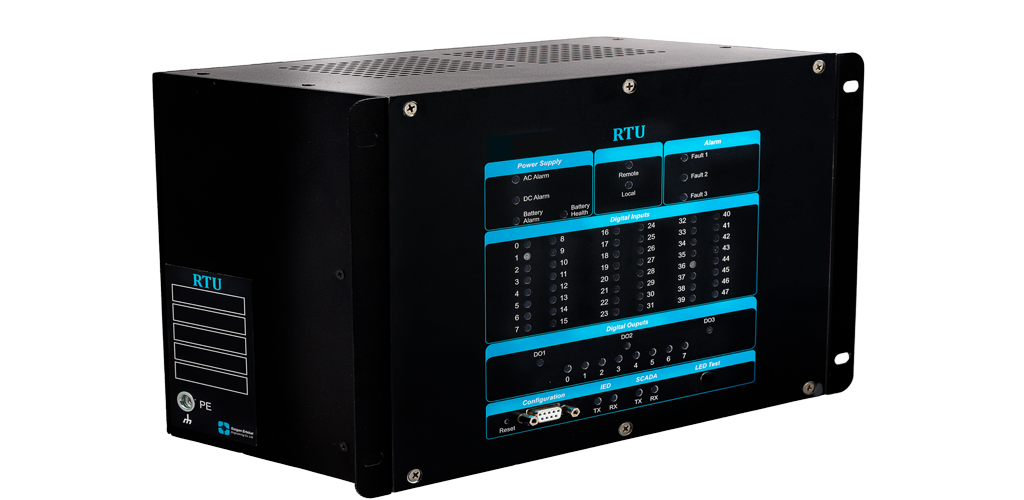
A remote terminal unit (RTU) is a microprocessor-controlled electronic device that interfaces objects in the physical world to a distributed control system or SCADA (supervisory control and data acquisition) system by transmitting telemetry data to a master system, and by using messages from the master supervisory system to control connected objects. Other terms that may be used for RTU are remote telemetry unit and remote telecontrol unit. An RTU monitors the field digital and analog parameters and transmits data to a SCADA Master Station. It runs setup software to connect data input streams to data output streams, define communication protocols, and troubleshoot installation problems in the field.An RTU may consist of one complex circuit card consisting of various sections needed to do a custom-fitted function, or may consist of many circuit cards including a CPU or processing with communications interface(s)

and one or more of the following: (AI) analog input, (DI) digital (status) input, (DO/CO) digital (or control relay) output, or (AO) analog output card(s). An RTU might even be a small process control unit with a small database for PID, Alarming, Filtering, Trending and other functions complemented with some BASIC (programming language) tasks. Modern RTUs typically support the IEC 61131-3 programming standard for programmable logic controllers. Since RTUs may be routinely deployed in pipeline and grid guarding systems, or in other hard-to-reach or extreme environments (for example in the Biosphere 2 project), they are required to operate under harsh conditions, and implement energy-saving measures (such as switching off IO modules when not in use). For example, it communicates via RS485 or wireless communication links in a multi-drop configuration. In this type of configuration it is a remote unit that collects data and performs simple control tasks. It does not have moving parts and uses extremely low power and is often solar powered.
